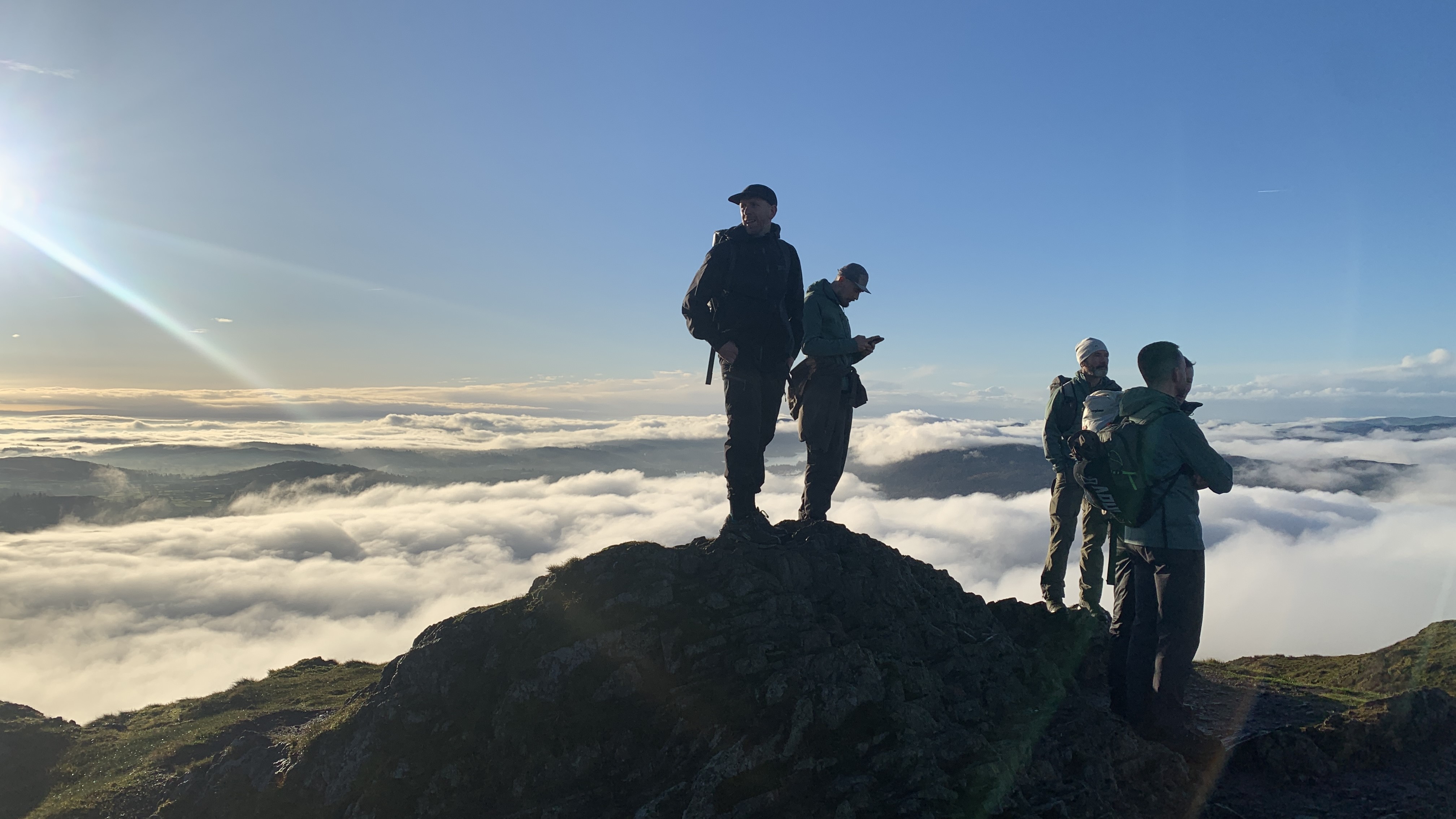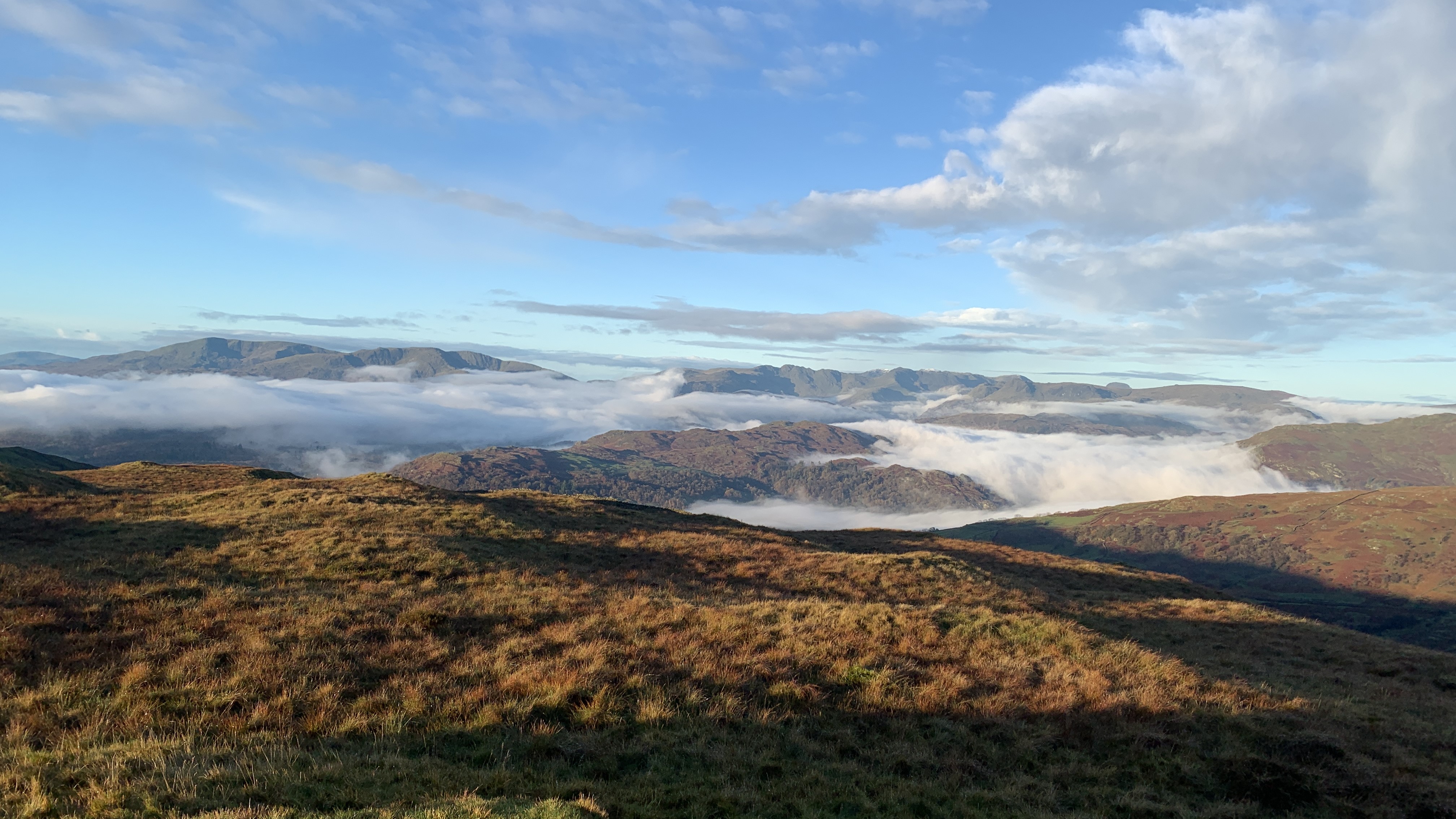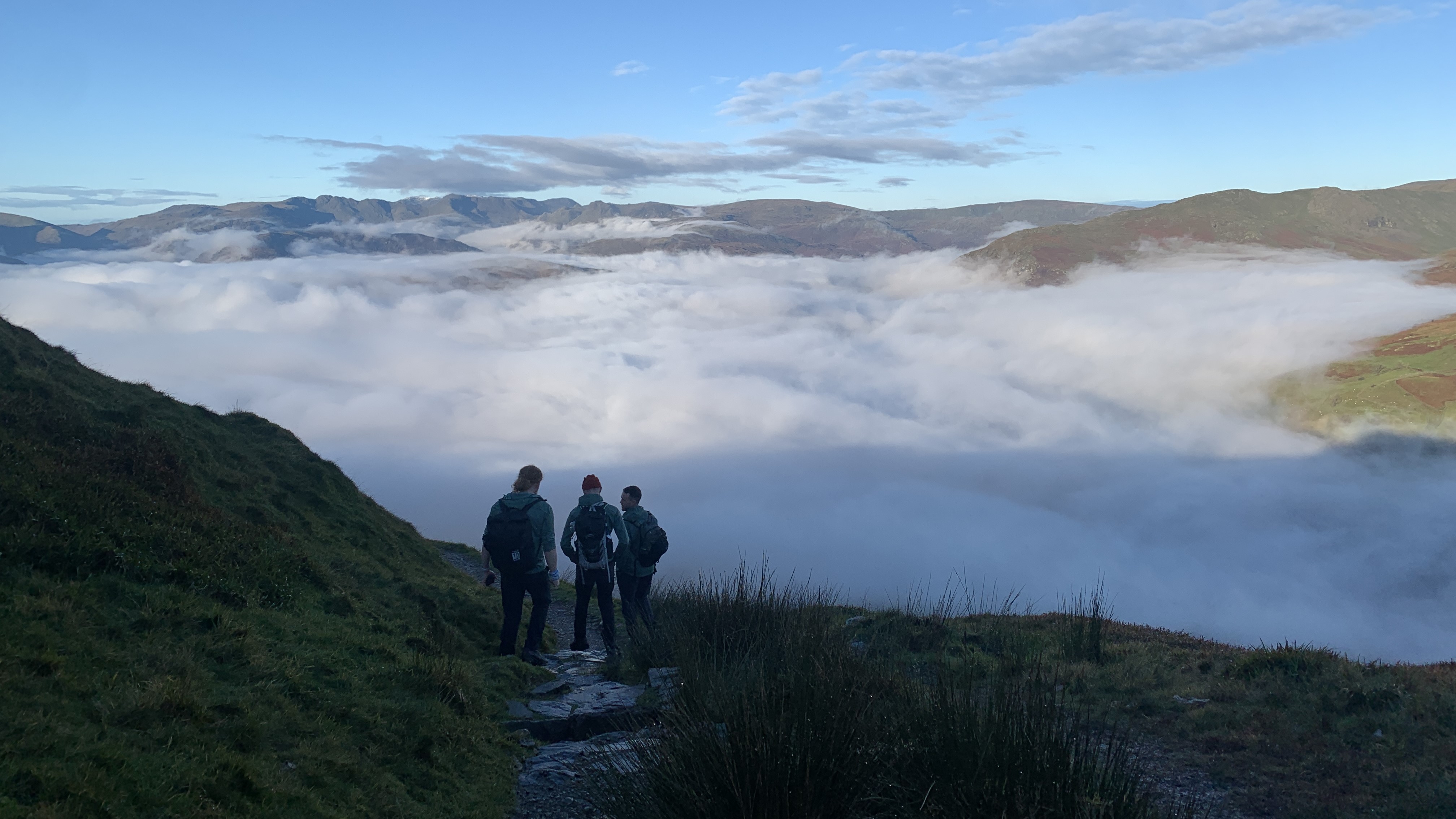What is a cloud inversion – and why is hiking in one so magical?
A look at what causes cloud inversions, why they’re so special, and how to catch one on your next hike

Recently I was on a sunrise hike in the Lake District in northern England with a group of journalists organized by the outdoors brand Jack Wolfskin. I was down there for the iconic Kendal Mountain Festival and had camped in my car the night before.
I woke up in the pitch dark at 6 a.m., got dressed using the light of my headlamp and started my drive down the hill to meet the group. The fog was thick and I was relieved it was just a short drive to where I’d transfer into a shuttle bus and hand over the white-knuckle driving to a professional.
An hour later, we set off to climb Wansfell Pike. It was barely dusk and the mist was heavy, creating that romantic, atmospheric vibe you’ve read about in novels written by people with the last name Bronte. Perhaps because I’d camped, I was really chilly and kept my fleece jacket on over my wool base layer with a waterproof jacket over the top as a shell, unwilling to even loosen a zip.
After about half an hour of steep climbing with little visibility, the gorgeous surrounding ridge of Caudale Moor suddenly began to loom out of the mist. Within a couple of minutes, we popped out above the cloud into glorious sunshine surrounded by gorgeous peaks while below us, a thick blanket of white clouds squatted stubbornly over the valley. As it turned out, we had been hiking in a cloud inversion, which is one of my all-time favorite conditions to walk in.

What is a cloud inversion?
The technical name for a cloud inversion is a temperature inversion, and that better explains what is happening. Under ordinary conditions, the temperature at the base of a mountain is warmer than that at the summit. As you climb, it gets colder and at the top, you might be pulling on your down jacket even though it was mild at the trailhead.
During a temperature inversion, there is no cloud overnight to trap warmer air and in the morning, you end up with a layer of cold air trapped close to the ground underneath a blanket of fog, and warmer air hovering up above.
When you’re hiking or skiing in a cloud inversion, you don’t often know it. In fact, it might just seem like you’re setting off from the trailhead or boarding the chairlift on a very foggy, chilly day where you can’t see very much. But when you get higher, the landscape in the distance might abruptly reveal itself and at a certain elevation, you’ll find yourself in brilliant sunshine, pulling off your jacket and looking down at the cloud you were just in still obscuring the valley below.
All the latest inspiration, tips and guides to help you plan your next Advnture!

Is cloud inversion the same as fog?
Even though we call it a cloud inversion, the term “cloud” technically refers to when the visible moisture is at 50 feet or higher. When it is lower, as it is during a cloud inversion, then it’s actually fog, according to the National Weather Service.
When should I expect cloud inversion?
Fall, winter and spring when it’s cooler are the best times to experience a cloud inversion because the cold overnight temperatures mean the morning sun doesn’t do such an effective job of burning off moisture as it does in the summer months.
There are other reasons a cloud inversion can form, such as shifts in weather patterns where a period of calm is about to give way to a wet period, or geography – areas with peaks surrounding bodies of water such as Salt Lake City and Asheville in the US or the Lake District and the Highlands in the UK are generally favorable places to spot cloud inversions.

Of course, if you don’t get your hiking boots or skis on and head uphill, you’ll never know if it’s actually a cloud inversion. They are hard to predict and there are times when you reach the trig point at the top only to still be in the cloud, but at least you got a hike in.
If you wake up to a misty morning but the weather is otherwise calm (not windy) and the forecasters are calling for high pressure and high moisture, there’s a decent chance you can have a magical moment on a mountain top.
Cloud inversions don’t usually last all day, so the key to catching one is to set your alarm and leave early. Of course, you’re going to be dealing with low visibility conditions, so it’s highly recommended you research your route, stay aware on the trail and pack a map and compass. Learn more in our article on hiking in fog.
Julia Clarke is a staff writer for Advnture.com and the author of the book Restorative Yoga for Beginners. She loves to explore mountains on foot, bike, skis and belay and then recover on the the yoga mat. Julia graduated with a degree in journalism in 2004 and spent eight years working as a radio presenter in Kansas City, Vermont, Boston and New York City before discovering the joys of the Rocky Mountains. She then detoured west to Colorado and enjoyed 11 years teaching yoga in Vail before returning to her hometown of Glasgow, Scotland in 2020 to focus on family and writing.

